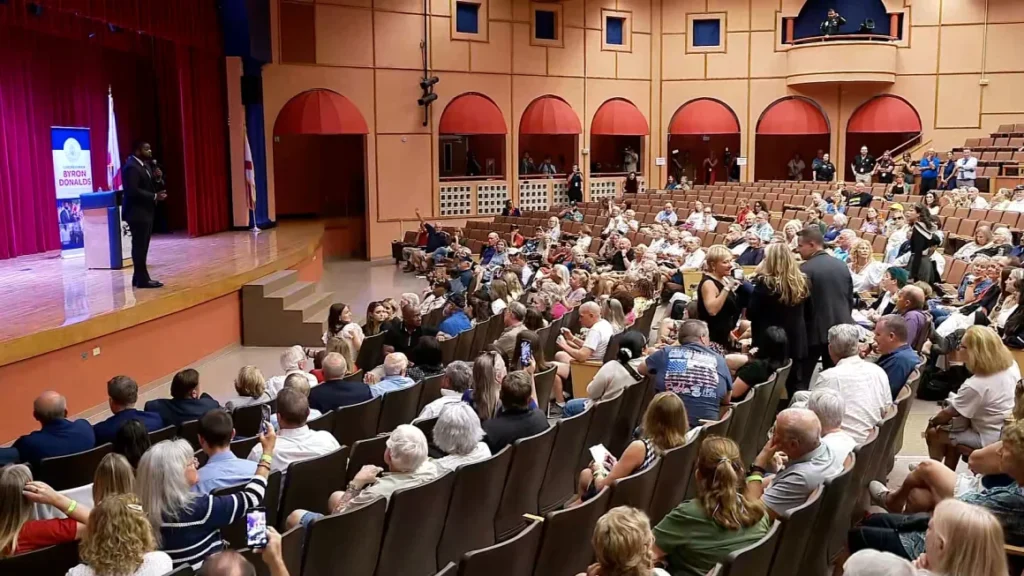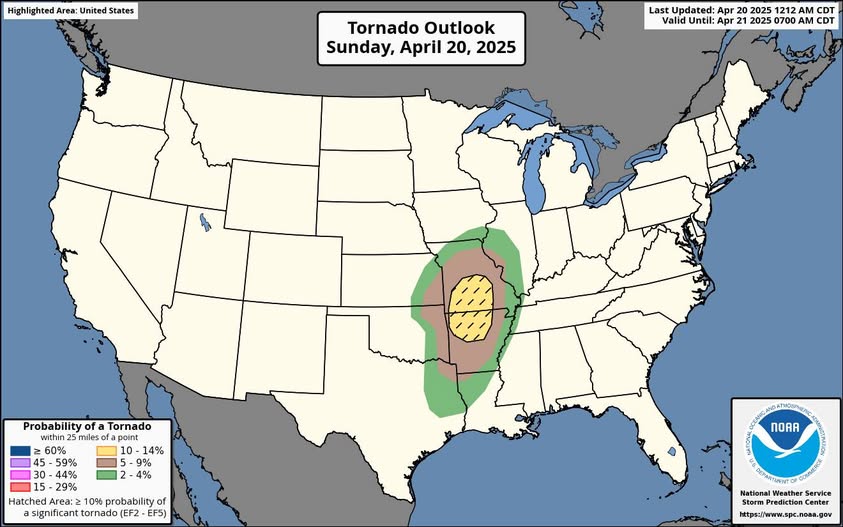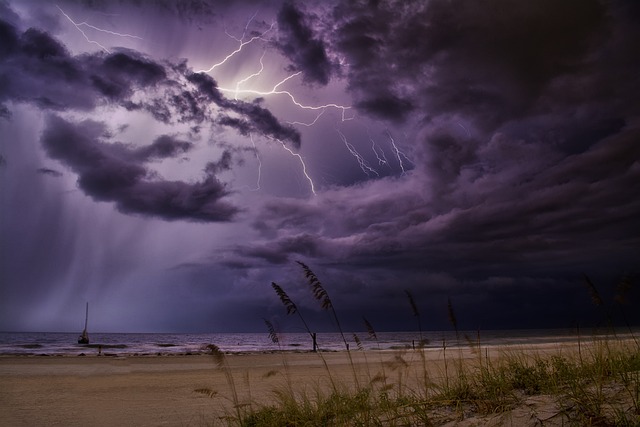A comprehensive analysis of one of 2025’s most catastrophic weather events, featuring 152 confirmed tornadoes, 25 fatalities, and widespread destruction across multiple states.
From April 2-7, 2025, a slow-moving weather system and stationary front unleashed one of the most destructive tornado outbreaks in recent U.S. history. With 152 confirmed tornadoes spanning multiple states, this catastrophic weather event left communities across the Southern and Midwestern United States reeling from unprecedented destruction. The outbreak claimed 25 lives, injured at least 47 people, and caused billions in property damage, earning a classification of “devastating” with a score of 96 on the Outbreak Intensity Scale.
This comprehensive analysis explores the meteorological causes behind this historic tornado outbreak, examines the most severely impacted areas, and documents the ongoing recovery efforts in what has become one of 2025’s most catastrophic natural disasters.
Meteorological Setup Behind the April 2025 Tornado Outbreak
The seeds of this devastating outbreak were planted days before the first tornado touched down. The Storm Prediction Center (SPC) began monitoring the Mississippi Valley and surrounding regions as early as March 28, identifying concerning atmospheric patterns that suggested potential severe weather development.
“This system exhibited classic signatures of a major tornado outbreak,” explains Dr. Harold Winters, senior meteorologist at the National Weather Service. “We observed a powerful combination of atmospheric instability, wind shear, and moisture that created ideal conditions for supercell thunderstorm development.”
By April 1, meteorologists had issued a rare high risk (5/5) convective outlook for southern Illinois, eastern Missouri, western Kentucky and Tennessee, eastern Arkansas, and northwest Mississippi. This designation, reserved for only the most dangerous severe weather scenarios, warned of “multiple EF3+ tornadoes” – a prediction that would prove tragically accurate.
The meteorological setup featured a mid-level trough positioned over the central United States that moved northeastward, while at the surface, a strong cyclone moved through the upper Mississippi Valley. This was accompanied by a powerful jet streak ejection of 120 knots (140 mph; 220 km/h) and a cold front moving through much of the region. The combination created a volatile environment where MLCAPE (a measure of atmospheric instability) reached 2,500–3,500 J/kg in the middle Mississippi Valley.
These conditions produced storm-relative helicity of around 400 m²/s² in the first 3 kilometers of the atmosphere, alongside deep-layer shear of 60 knots – textbook parameters for the development of long-track, violent tornadoes.
Tornado Outbreak Timeline: April 2–7, 2025
April 2: The Outbreak Begins
The outbreak commenced on April 2 when a tornado struck Owasso, Oklahoma, causing damage to homes. This was just the beginning of what would become a multi-day severe weather event. Later that day, a significant tornado struck Nevada, Missouri, removing roofs from homes and injuring at least one person.
In Pilot Grove, Missouri, an EF2 tornado destroyed a manufactured home and tossed cars. In a frightening failure of early warning systems, the tornado sirens in the town did not sound due to a malfunction, though fortunately no one was hurt.
The most significant tornado of the day was a large, multiple-vortex EF3 that moved through Lake City, Arkansas, prompting officials to issue a tornado emergency – a designation reserved for only the most life-threatening situations. At least one person was killed by another tornado that struck Advance and Delta in Missouri, leaving significant damage to homes.
April 3: Overnight Destruction
In the early morning hours of April 3, an EF3 tornado struck the city of Selmer, Tennessee, while another supercell produced another EF3 tornado near Slayden, Mississippi, prompting the issuance of another tornado emergency. Near La Grange, Tennessee, six people were killed and 21 others were injured when a tornado destroyed a mobile home park, marking the deadliest single incident of the outbreak.
April 4-7: Continued Threat and Flooding
As the weather system moved slowly eastward, it continued to generate tornadoes while also producing catastrophic rainfall. A broad swath of 8–12 inches (20–30 cm) of rain fell across the Ohio Valley, especially in Kentucky, causing major rivers to overflow their banks and approach record crest levels.
The combination of tornadic activity and flooding created a compound disaster that overwhelmed emergency response capabilities in many areas. Due to multiple rounds of severe weather hitting the same areas, storm surveys had to be delayed for several days, complicating damage assessment efforts.
Most Significant Tornado Deadliest Tornadoes During the April 2025 Outbreaks: Paths of Destruction
Lake City, Arkansas EF3 Tornado
The Lake City, Arkansas tornado on April 2 carved a path of destruction nearly 18 miles long and up to half a mile wide. This multiple-vortex EF3 tornado, with estimated peak winds of 160 mph, destroyed dozens of homes and businesses in the small community.
“I’ve never seen anything like it,” said Lake City Mayor Thomas Wilson. “The tornado appeared suddenly and moved through our town with incredible speed. We’re just grateful the warning systems worked and people had time to seek shelter.”
The tornado damaged or destroyed approximately 85 structures, including the partial collapse of a nursing home facility where residents had been moved to interior hallways just minutes before impact. Miraculously, no fatalities occurred in Lake City, though 12 people required hospitalization for injuries.
Selmer, Tennessee EF3 Tornado
The Selmer, Tennessee tornado struck in the early morning hours of April 3, catching many residents asleep. This EF3 tornado, with estimated winds of 155 mph, damaged over 120 homes and completely destroyed 38 structures.
“It sounded like a freight train,” recalled Selmer resident Jennifer Harding. “We barely made it to our basement before the house started coming apart above us. Our roof is gone, but we’re alive.”
The tornado’s path through Selmer included a direct hit on a shopping center and several residential neighborhoods. Two fatalities occurred when a tree fell on a home, and 15 people suffered injuries ranging from minor to critical.
La Grange, Tennessee Tornado
The deadliest single tornado of the outbreak struck near La Grange, Tennessee, where six people lost their lives and 21 others were injured when an EF3 tornado with estimated winds of 165 mph destroyed a mobile home park.
“The mobile homes offered almost no protection,” explained McNairy County Emergency Management Director Michael Stokes. “Many residents had little warning and nowhere adequate to shelter. This tragedy highlights the vulnerability of manufactured housing during tornado events.”
The tornado completely obliterated 27 mobile homes, with debris scattered up to a mile from the original site. First responders described the scene as “complete devastation” with few recognizable structures remaining.
Flooding Adds to April 2025 Tornado Devastation
While tornadoes captured most media attention, the slow-moving nature of the weather system also resulted in catastrophic flooding across much of the Ohio Valley. Kentucky was particularly hard hit, with some areas receiving over 12 inches of rain in less than 72 hours.
The flooding claimed 15 lives – more than the tornadic activity itself – primarily from vehicles swept away by flash floods and people trapped in rapidly rising water in basement apartments. Major rivers including the Ohio, Cumberland, and Tennessee approached or exceeded record flood stages.
In Louisville, Kentucky, the Ohio River crested at 34.2 feet, the third-highest level on record, flooding portions of downtown and forcing thousands to evacuate. The flooding damaged critical infrastructure, including water treatment facilities, leaving some communities under boil water advisories for over a week.
“This was a dual disaster,” said FEMA Administrator Rebecca Winters. “Communities were simultaneously dealing with tornado damage and historic flooding, stretching emergency resources to their limits and complicating evacuation efforts.”
Human Impact of April 2025 Tornado Outbreak
The human toll of this disaster extends far beyond the immediate fatalities and injuries. Thousands of residents across multiple states found themselves suddenly homeless, with entire neighborhoods reduced to rubble and personal possessions scattered for miles.
In Monette, Arkansas, the tornado destroyed over 60% of the town’s structures, including the elementary school and main business district. “Our community has been here for generations, and now it’s gone,” said lifelong resident Harold Jenkins, 72. “I don’t know if we can rebuild from this.”
The economic impact has been equally devastating. Preliminary estimates suggest property damage exceeding $3.8 billion, with additional economic losses from business interruption, agricultural damage, and infrastructure repairs potentially doubling that figure.
For many rural communities already facing economic challenges, the path to recovery looks daunting. In McNairy County, Tennessee, where the La Grange tornado struck, the county’s largest employer – a furniture manufacturing facility – was completely destroyed, eliminating 320 jobs in a community of just 4,200 people.
Response and Recovery Efforts: The Long Road Ahead
Federal disaster declarations were quickly issued for affected areas in Arkansas, Missouri, Tennessee, Mississippi, Kentucky, and Illinois, unlocking FEMA assistance for both individual residents and public infrastructure repairs.
Within 48 hours of the outbreak, over 1,200 National Guard troops had been deployed across the affected states to assist with search and rescue, debris removal, and security operations. The American Red Cross established 37 emergency shelters housing over 3,400 displaced residents at the peak of the disaster.
“The coordination between federal, state, and local agencies has been remarkable,” noted Arkansas Governor Sarah Williams. “But the scale of this disaster means recovery will take years, not months.”
Challenges in the recovery process have been numerous. The widespread nature of the damage stretched emergency resources thin, while continued rainfall hampered debris removal and utility restoration efforts. In some areas, storm surveys were delayed for days due to impassable roads and continued severe weather, complicating the damage assessment process necessary for insurance claims and federal assistance.
As of mid-April, approximately 22,000 households across the affected region had registered for FEMA assistance, with over $42 million in individual assistance approved. However, officials acknowledge this represents just the beginning of what will be a lengthy recovery process.
Scientific Context: A Changing Pattern?
The April 2-7 outbreak occurred just weeks after another significant tornado outbreak affected similar areas, raising questions about whether climate patterns might be influencing severe weather frequency or intensity.
Dr. Elizabeth Chen, climate scientist at the National Center for Atmospheric Research, cautions against drawing direct connections between individual events and climate change but notes concerning patterns. “What we’re seeing is consistent with climate models that predict more volatile atmospheric conditions conducive to severe weather in certain regions. The clustering of major outbreaks deserves careful study.”
With a total of 152 confirmed tornadoes, this outbreak ranks among the top 15 most prolific tornado events in U.S. recorded history. Its Outbreak Intensity Score (OIS) of 96 classifies it as “devastating” – a designation reserved for only the most significant tornado outbreaks.
Meteorologists also note the outbreak’s unusual geographic concentration, with nearly 70% of the tornadoes occurring in just four states: Arkansas, Missouri, Tennessee, and Mississippi. This concentration of violent tornadoes outside the traditional “Tornado Alley” of the Great Plains continues a trend observed in recent years of increased tornado activity in the Southeast and lower Mississippi Valley.
Preparedness and Warning Systems: Lessons Learned
The April 2025 outbreak has prompted renewed discussion about tornado preparedness and warning systems. While the Storm Prediction Center’s advance forecasting provided crucial early awareness, individual tornado warnings still relied on a combination of radar detection and storm spotters.
The failure of tornado sirens in Pilot Grove, Missouri highlights the vulnerability of single-point warning systems. “This event reinforces the importance of redundant warning methods,” explains Dr. James Martinez, expert in emergency management at the University of Oklahoma. “Communities need layered approaches including sirens, weather radios, cell phone alerts, and traditional media.”
The outbreak also exposed the particular vulnerability of manufactured housing, which accounted for over 40% of the fatalities despite representing a much smaller percentage of overall housing stock in the affected areas. Emergency management officials are calling for improved building codes and enhanced shelter options for mobile home communities.
Moving Forward: Rebuilding with Resilience
As communities begin the long process of rebuilding, many are looking to incorporate greater resilience against future disasters. In Lake City, Arkansas, city officials are exploring updated building codes that would require safe rooms in new construction and incentivize retrofitting existing structures.
“We can’t prevent tornadoes, but we can build communities that better withstand them,” says Robert Thompson, director of the Multi-State Disaster Recovery Coalition. “Every disaster provides lessons that can save lives in the future if we’re willing to learn from them.”
For the thousands of individuals impacted by this historic outbreak, recovery will be measured in years rather than months. Yet amid the destruction, stories of community resilience have emerged – neighbors helping neighbors, volunteers arriving from across the country, and a determination to rebuild stronger than before.
The April 2-7, 2025 tornado outbreak will long be remembered as one of the most significant severe weather events in recent U.S. history – a stark reminder of nature’s power and the importance of preparedness, resilient infrastructure, and community support in the face of disaster.
For those wishing to support recovery efforts, donations can be made to the American Red Cross Disaster Relief Fund or the Tornado Recovery Foundation. Affected residents can apply for FEMA assistance at DisasterAssistance.gov or by calling 1-800-621-FEMA.
Rebuilding After the April 2025 Tornado Outbreak
The April 2025 tornado outbreak will go down in history not only for its numbers, but for the way it impacted real people and forever changed entire communities. As the rebuilding begins, the emphasis must shift toward resilient infrastructure, stronger emergency systems, and a renewed focus on preparedness.
While the storms have passed, the lessons remain. From early warnings to community unity, how we respond now will shape how we withstand the next natural disaster.
FAQs
How many tornadoes occurred during the April 2025 outbreak?
A total of 152 confirmed tornadoes struck during the April 2–7, 2025 outbreak, making it one of the most prolific on record.
Which states were hit hardest by the April 2025 tornadoes?
Arkansas, Missouri, Tennessee, and Mississippi accounted for nearly 70% of all tornadoes during this outbreak.
What made the April 2025 tornado outbreak so intense?
Perfect storm conditions, including high instability, wind shear created an ideal setup for violent, long-track tornadoes.
Was flooding part of the April 2025 tornado disaster?
Yes. Catastrophic flooding occurred in Kentucky and the Ohio Valley, causing more deaths than tornadoes in some areas.
How much damage did the April 2025 tornado outbreak cause?
The damage is estimated at over $3.8 billion, with potential losses exceeding $7 billion when including economic impacts.
How can people help those affected by the April 2025 tornadoes?
Donations can be made to the American Red Cross Disaster Relief Fund and Tornado Recovery Foundation. Affected residents should visit DisasterAssistance.gov.
Inbound Links:
Outbound Links:




